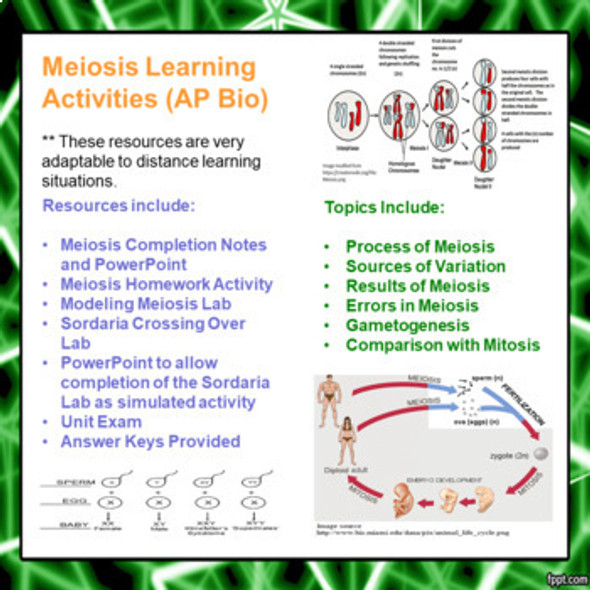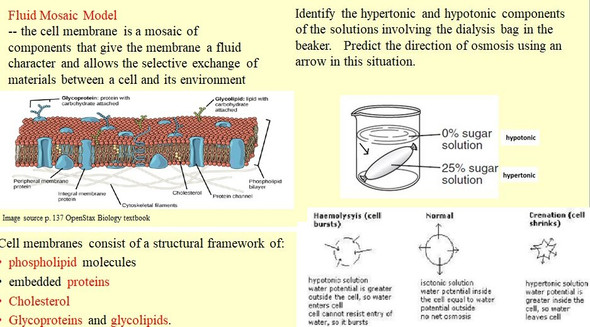Community Ecology Learning Activities for AP Biology (Distance Learning)
- Bulk Pricing:
- Buy in bulk and save
- Contributor:
- Monday's Rescue
- Grade Level:
- 9-12
- Product Type:
- Learning Package (Notes, PowerPoint, Homework)
- File Type:
- doc, pdf, ppt
- Pages:
- 25
- Answer Key:
- Yes
Description
This package of learning materials addresses topics taught in AP Biology or other upper level biology classes on topics of Community Ecology. Some of the topics addressed include community structure, Simpson's diversity Index calculation and interpretation, predator-prey relationships, competition, competitive exclusion principle, niches and niche overlap, resource partitioning and trophic cascades. The specific learning objectives and standards are addressed at the end of the package description. This unit has been correlated to the new 2019-2020 AP Biology ETS, NGSS and Common Core learning standards.
All materials are may be modified by you to suit your needs and those of your students. Documents are available in both word and pdf format. These learning materials may be easily modified for use in distance learning settings.
The file contains 25 pages of student learning materials and one 29 slide PowerPoint. The answer keys to all activities are included.
The specific contents of the learning package includes the following items (the page count for these items are actual student handouts as answer key page counts are not included):
- Learning Objectives for Students with correlations to the CollegeBoard/ETS, NGSS and Common Core Standards (2 pages)
- Aspects of Community Ecology Completion Notes (8 pp)
- PowerPoint to accompany the Community Ecology and Diversity Completion Notes (29 slides)
- Links to other online resources pertaining to these topics (labs and videos) (1 page)
- Community Ecology quiz with key (33 questions) (7 pages including the answer sheet)
- Community Ecology Reading Guide with key (correlated with free online OpenStax Biology 2nd edition textbook but may be used with any College Biology text) (20 short answer questions) (5 pages)
- Simpson's Diversity Index worksheet with key (3 pp)
Learning Objectives ETS
Enduring Understanding
ENE-4 Communities and ecosystems change on the basis of interactions among populations and disruptions to the environment.
Learning Objectives
ENE-4.A Describe the structure of a community according to its species composition and diversity.
ENE-4.B Explain how interactions within and among populations influence community structure.
ENE-4.C Explain how community structure is related to energy availability in the environment.
Learning Goals (Local)
Upon the completion of this unit the student will be able to:
1. recognize the structure of a community can be described in terms of
species composition and species diversity.
2. utilize Simpson's diversity index to mathematically access the species
diversity in a community.
3. recognize communities change over time because of interactions between their populations.
4. explain how competition influences the structure of a community.
5. explain how predator-prey relationships influence the structure of a community.
6. list and define three categories of symbiotic relationships.
7. list examples for each of the three categories of symbiotic relationships.
8. explain what is meant by an ecological niche.
9. state the competitive exclusion principle.
10. explain how Gause supported the competitive exclusion principle through experimentation.
11. explain what is meant by niche overlap.
12. explain what is meant by resource partitioning and describe an example of this.
13. explain what is meant by a trophic cascade and describe an example of this.
NGSS Standards
HS-LS2-2. Use mathematical representations to support and revise explanations based on evidence about factors affecting biodiversity and populations in ecosystems of different scales.
HS-LS2-6. Evaluate the claims, evidence, and reasoning that the complex interactions in ecosystems maintain relatively consistent numbers and types of organisms in stable conditions, but changing conditions may result in a new ecosystem.
Core State Standards Connections:
ELA/Literacy
RST.9-10.8 Assess the extent to which the reasoning and evidence in a text support the author’s claim or a recommendation for solving a scientific or technical problem.
RST.11-12.1 Cite specific textual evidence to support analysis of science and technical texts, attending to important distinctions the author makes and to any gaps or inconsistencies in the account.
RST.11-12.8 Evaluate the hypotheses, data, analysis, and conclusions in a science or technical text, verifying the data when possible and corroborating or challenging conclusions with other sources of information.
WHST.9-12.2 Write informative/explanatory texts, including the narration of historical events, scientific procedures/ experiments, or technical processes.
Mathematics
MP.2 Reason abstractly and quantitatively.
MP.4 Model with mathematics.
Terms of Use
Purchase of the product is for classroom use by the purchaser only. It is a violation for individuals, schools, and districts to redistribute, sell, or post this item on the Internet.
This work is licensed under a Creative Commons Attribution-NonCommercial-ShareAlike 4.0 International License
This learning package bundle is part of the AP Biology Complete Course. The complete course contains 22 learning package bundles in addition to this one. Save nearly 60% over the cost of buying 23 individual unit learning bundles with your purchase of the complete course.
Please feel free to browse the other products in my store.














